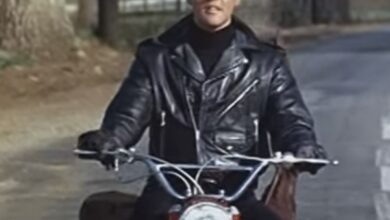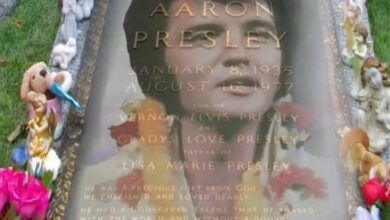Arguably his most exceptional vocal performance on live television, these timeless classics continue to resonate. Rest in peace, Elvis
Elvis Presley’s entry into the entertainment world is a fascinating story with deep cultural significance, and his 1956 color screen test for “The Rainmaker” offers insight into the early days of his legendary career. This performance highlighted his exceptional vocal talent and magnetic stage presence, marking a pivotal moment in the perception of rock and roll. During the mid-1950s, Elvis emerged as a powerhouse, seamlessly blending diverse musical influences that captivated a wide-ranging audience.
The screen test’s backdrop reflected the era, with rock and roll music rising alongside post-World War II cultural shifts. Young people sought new ways to express themselves, and Elvis embodied this transformation. His spirited rendition of “Blue Suede Shoes” captured the essence of youth, rebellion, and self-discovery. Originally written and performed by Carl Perkins, the song struck a chord with audiences, emphasizing themes of individuality and pride.
Elvis’s distinctive style drew from rhythm and blues, country, and rockabilly. His take on “Blue Suede Shoes” was instrumental in popularizing rockabilly, known for its energetic beats and twangy guitar riffs. This genre became synonymous with Elvis, whose innovative fusion of musical styles reshaped the pop music landscape and inspired countless future artists. His powerful vocals and dynamic performance style created a legacy that crossed racial and generational divides.
In the screen test, Elvis revealed a persona that was charming, confident, and mischievous. His signature hip-swiveling moves, often imitated but never matched, exuded a sensuality that captivated fans. While his provocative image drew criticism from conservative circles, it also cemented his status as a cultural icon, heralding a musical revolution.
Over time, “Blue Suede Shoes” transcended its status as a hit to become a cultural emblem. The song’s catchy rhythm and relatable lyrics resonated with youth, embodying playful energy and rebellion. Elvis’s raw and authentic interpretation inspired a generation to embrace rock and roll as an expression of their desires and frustrations.
While Elvis’s charisma was a key element, the music itself played a crucial role in his rise. The song’s driving rhythm encouraged movement and exuberance, signaling a shift in the music industry as rock and roll emerged as a dominant force. Though the genre’s roots lay in earlier American music forms, artists like Elvis propelled it into mainstream culture, solidifying its place in history.
This performance also hinted at Elvis’s transition into the film industry. As his music career soared, he began acting in films that showcased his musical talents. The “Rainmaker” screen test reflected his ability to captivate audiences not only with his music but also with his screen presence, paving the way for a prolific film career filled with musicals that reinforced his multifaceted appeal.
Beyond music, Elvis influenced fashion and lifestyle, inspiring fans to adopt his bold clothing, slicked-back hair, and confident demeanor. His transformation extended the impact of “Blue Suede Shoes” beyond its sound, turning him into a style icon. The song’s themes of pride and individuality resonated with fans, intertwining his story with the cultural pulse of the 1950s.
As time passed, Elvis’s music evolved while remaining rooted in rock and roll. His career saw multiple resurgences, and “Blue Suede Shoes” continued to be revisited and celebrated. Its covers by artists across genres underscored its adaptability and highlighted the timeless appeal of Elvis’s original version.
Today, documentaries and retrospectives explore Elvis’s influence on music and culture. His “Rainmaker” screen test remains a treasured artifact, capturing the youthful exuberance of a man destined for greatness. Elvis’s journey from humble beginnings to global superstardom is a testament to the transformative power of music and the enduring impact of a visionary who shattered boundaries.



